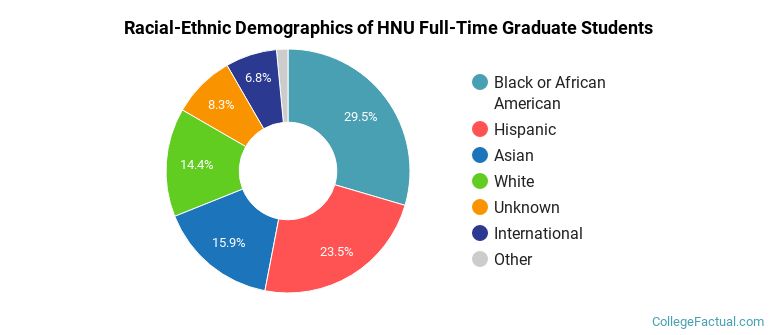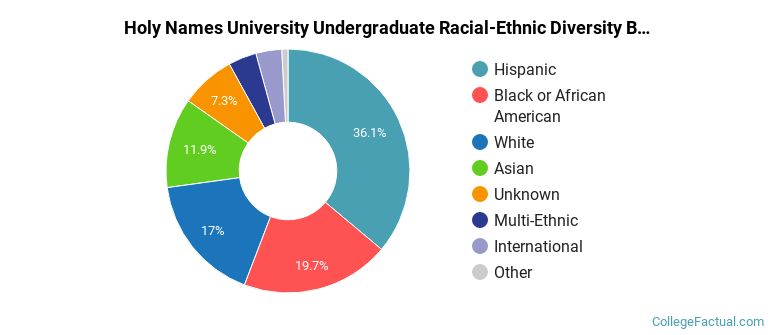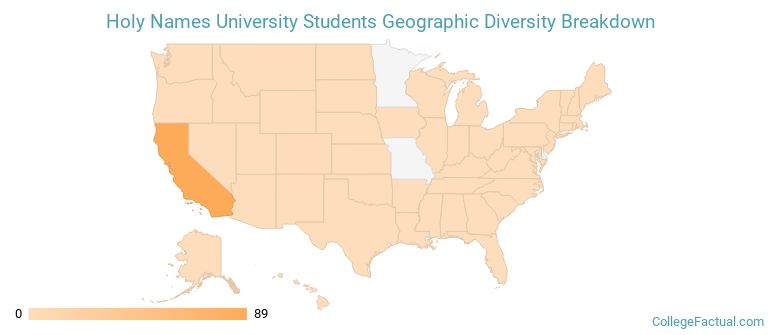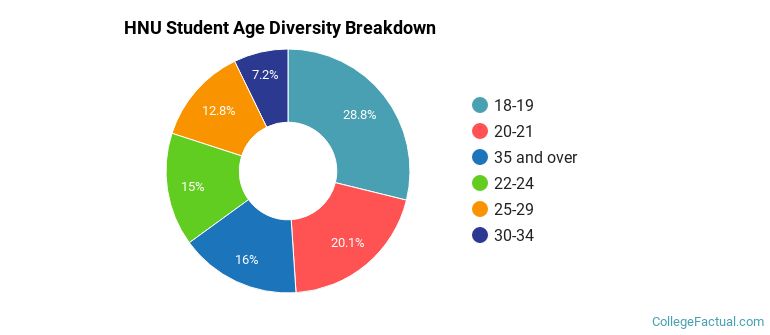 by our College Data Analytics Team
by our College Data Analytics TeamHNU total enrollment is approximately 1,014 students. 591 are undergraduates and 135 are graduate students.
Male/Female Breakdown of Undergraduates
The full-time HNU undergraduate population is made up of 65% women, and 35% men.

For the gender breakdown for all students, go here.
HNU Racial/Ethnic Breakdown of Undergraduates

| Race/Ethnicity | Number |
|---|---|
| Hispanic | 239 |
| Black or African American | 98 |
| White | 69 |
| Unknown | 63 |
| Asian | 61 |
| Multi-Ethnic | 34 |
| International | 18 |
| Native Hawaiian or Pacific Islander | 7 |
See racial/ethnic breakdown for all students.
Male/Female Breakdown of Graduate Students
About 76% of full-time grad students are women, and 24% men.

For the gender breakdown for all students, go here.
HNU Racial-Ethnic Breakdown of Graduate Students

| Race/Ethnicity | Number |
|---|---|
| Hispanic | 40 |
| Black or African American | 36 |
| White | 19 |
| Unknown | 14 |
| Asian | 13 |
| International | 7 |
| Multi-Ethnic | 6 |
| Native Hawaiian or Pacific Islander | 0 |
See racial/ethnic breakdown for all students.

| Race/Ethnicity | Number |
|---|---|
| Hispanic | 340 |
| Black or African American | 196 |
| White | 169 |
| Asian | 107 |
| Unknown | 107 |
| Multi-Ethnic | 50 |
| International | 34 |
| Native Hawaiian or Pacific Islander | 8 |

There are approximately 717 female students and 297 male students at HNU.
HNU ranks 1,886 out of 2,183 when it comes to geographic diversity.
1.11% of HNU students come from out of state, and 6.25% come from out of the country.

The undergraduate student body is split among 2 states (may include Washington D.C.). Click on the map for more detail.

| State | Amount |
|---|---|
| California | 89 |
| Colorado | 1 |
| Alaska | 0 |
| Alabama | 0 |
| Arkansas | 0 |
Students from 25 countries are represented at this school, with the majority of the international students coming from France, Japan, and Australia.
Learn more about international students at HNU.
A traditional college student is defined as being between the ages of 18-21. At HNU, 47.62% of students fall into that category, compared to the national average of 60%.

| Student Age Group | Amount |
|---|---|
| 18-19 | 248 |
| 20-21 | 173 |
| 35 and over | 138 |
| 22-24 | 129 |
| 25-29 | 110 |
| 30-34 | 62 |
| Under 18 | 0 |
Footnotes
*The racial-ethnic minorities count is calculated by taking the total number of students and subtracting white students, international students, and students whose race/ethnicity was unknown. This number is then divided by the total number of students at the school to obtain the racial-ethnic minorities percentage.
References
Department of Homeland Security Citizenship and Immigration Services
Image Credit: By HolyNamesWebmaster under License
Read College Factual's Diversity Ranking Methodology.